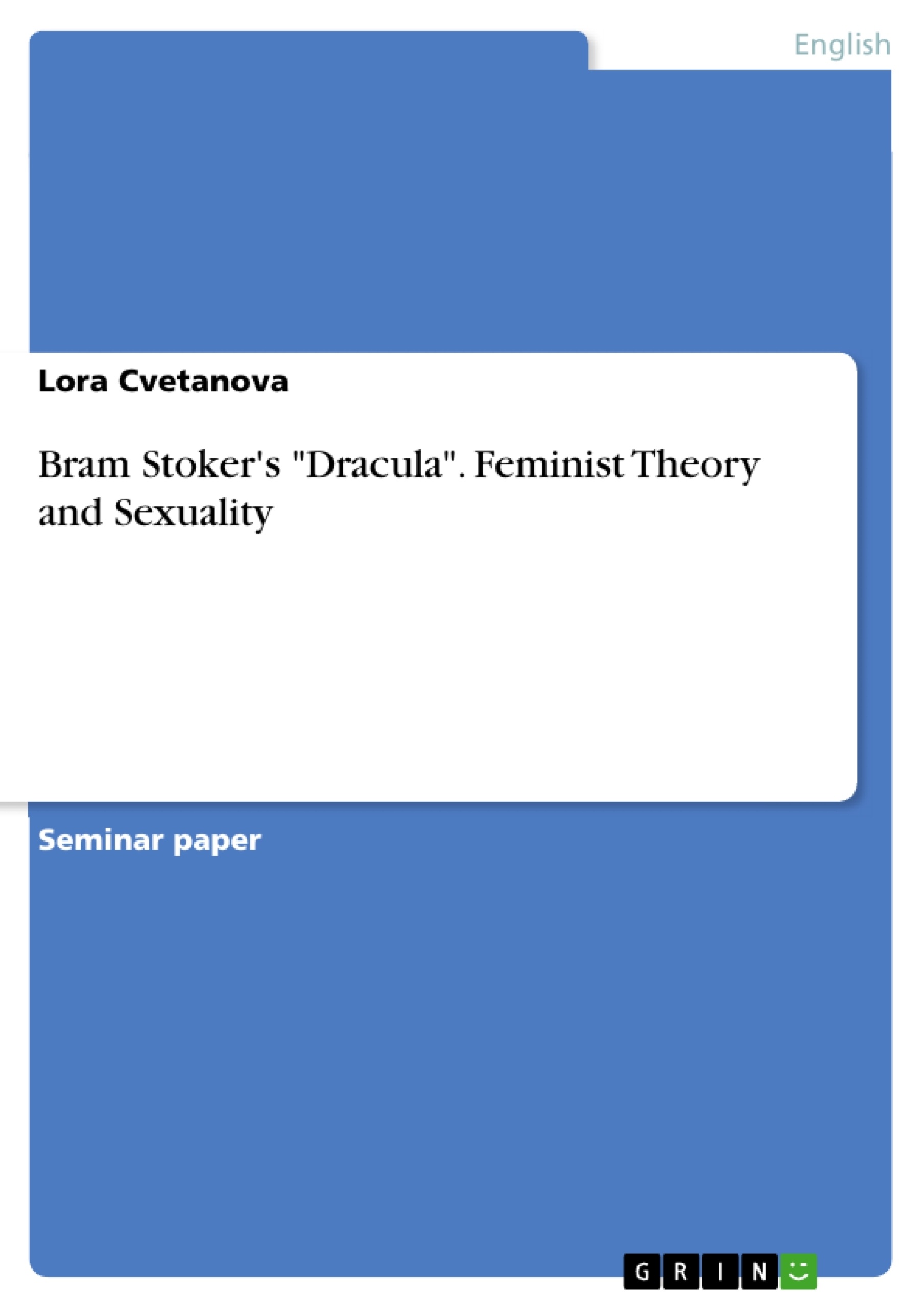Bram Stoker was an Irish author born in the nineteenth century. Dracula, Stoker drew from a rich heritage of vampire legends of the Middle Ages and added a historical realism to the story by incorporating the tale of Vlad and thus immortalizing the Dracula myth. Stoker’s novel, published in 1897, was also making many commentaries about England and the world in a time of great social change. This paper, however, is focused on one type of critical theory: the feminist theory in literature. When I say feminist theory I mean a feminist literary analysis that arises from the viewpoint of feminism, feminist theory or feminist politics. The basic method of feminist literary criticism includes “the identifying with female characters, which is a way to challenge the male-centered outlook of authors. It suggests that women in literature were historically presented as objects seen from a male perspective.” According to feminist theory, in a patriarchal society there are “good girls”, who are pure and useful to their husbands, and there are “bad girls” who are sexually explicit in their nature and are considered to be not the “marrying type”.
In the fallowing commentary I would like to draw your attention to the feminine characters Lucy Westenra, Mina Harker, and the three brides of Dracula in Bram Stoker’s Dracula. Through feminist theory I will first tackle with the idea that Stoker’s novel is built on a patriarchal model and that women exist only to support male characters and to bring the attention to them. From there, I will move on to discuss the fact that women in literature are historically presented as objects seen from a male perspective, which implies that sexuality is not accepted in Victorian society. To do so I will follow Lucy’s, Mina’s, Jonathan’s, Dr. Seward’s and Van Helsing’s diaries. To explore the subject further I will also discuss Francis Ford Coppola’s adaptation of Bram Stokers novel.
Inhaltsverzeichnis (Table of Contents)
- Introduction
- A Close up on Lucy Westera
- Paternalism and Mina Harker
- Dracula's Three Brides
- Conclusion
Zielsetzung und Themenschwerpunkte (Objectives and Key Themes)
This paper analyzes Bram Stoker's Dracula through the lens of feminist literary criticism. The author aims to demonstrate how the novel reflects patriarchal societal structures and the objectification of women within Victorian England.
- The portrayal of women as objects within a patriarchal society
- The limitations imposed on female characters within a Victorian framework
- The exploration of female sexuality and its representation in the novel
- The contrast between the archetypes of "good girls" and "bad girls"
- The exploration of societal expectations and constraints placed on women in Victorian England
Zusammenfassung der Kapitel (Chapter Summaries)
- Introduction: Introduces the concept of feminist literary criticism and its application to Bram Stoker's Dracula, outlining the key themes of the paper.
- A Close up on Lucy Westenra: Explores the character of Lucy Westenra as a representation of the Victorian ideal of a "good girl" and examines how her portrayal embodies societal expectations placed on women.
- Paternalism and Mina Harker: Analyzes the character of Mina Harker and her relationship with Jonathan Harker, exploring themes of paternalism and the Victorian ideal of female purity.
Schlüsselwörter (Keywords)
This paper centers on the key concepts of feminist theory, Victorian society, patriarchal structures, female sexuality, and the representation of women in literature. The analysis focuses on the characters of Lucy Westenra and Mina Harker as examples of how societal expectations and constraints impact their lives and choices.
- Quote paper
- Lora Cvetanova (Author), 2014, Bram Stoker's "Dracula". Feminist Theory and Sexuality, Munich, GRIN Verlag, https://www.grin.com/document/278591



